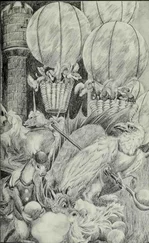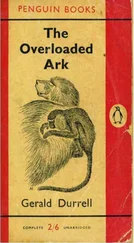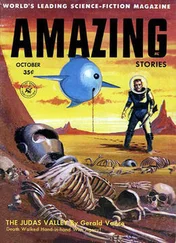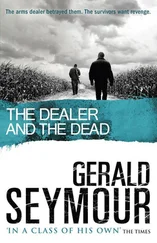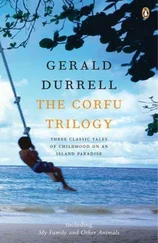The Brighthelmstone Monster was an unlucky Monster.
The Reverend Arthur Titty also suffered. After the killing of Rodgers and the hanging of Hodge the fishermen began to hate him. Heavy stones were thrown against his shutters at night. Someone set fire to one of his haystacks. This must have given Titty something to think about, for rick-burning was a hanging matter, and one may as well hang for a parson as for a haystack. He made up his mind to go to London and live in politer society. So he was uprooted by the Monster. The fishermen hated the Monster too. They regarded it as a sort of devil. But the Monster did not care. It was languishing, dying of a mysterious sickness. Curious sores had appeared at various points on the Monster’s body – they began as little white bumps such as one gets from stinging-nettles, and slowly opened and would not close. The looseness of the skin, now, lent the dragons and fishes a disgustingly lifelike look: as the Monster breathed, they writhed. A veterinary surgeon poured melted pitch on the sores. The Reverend Titty kept it well soaked in sea water and locked it in a room, because it had shown signs of wanting to escape.
At last, nearly three months after its first appearance in Brighthelmstone, the Monster escaped. An old manservant, Alan English, unlocked the door, in the presence of the Reverend Arthur Titty, to give the Monster its daily mess of vegetables and boiled meat. As the key turned the door was flung open with such violence that English fell forward into the room – his hand was still on the door-knob – and the Monster ran out, crying aloud in a high, screaming voice. The Reverend Arthur Titty caught it by the shoulder, whereupon he was whisked away like a leaf in the wind and lay stunned at the end of the passage. The Monster ran out of the house. Three responsible witnesses – Rebecca North, Herbert George and Abraham Herris (or Harris) – saw it running towards the sea, stark naked, although a north-east wind was blowing. The two men ran after it, and Rebecca North followed as fast as she could. The Monster ran straight into the bitter water and began to swim, its arms and legs vibrating like the wings of an insect. Herbert George saw it plunge into the green heart of a great wave, and then the heavy rain fell like a curtain and the Brighthelmstone Monster was never seen again.
It had never spoken. In the later stages of its disease its teeth had fallen out. With one of these teeth – probably a canine – it had scratched marks on the dark oak panels of the door of the room in which it was confined. These marks the Reverend Arthur Titty faithfully copied and reproduced in his pamphlet.
The Brighthelmstone fishermen said that the sea devil had gone back where it belonged, down to the bottom of the sea to its palace built of the bones of lost Christian sailors. Sure enough, half an hour after the Monster disappeared there was a terrible storm, and many seamen lost their lives. In a month or so Titty left Brighthelmstone for London. The city swallowed him. He published his pamphlet in 1746 – a bad year for natural philosophy, because the ears of England were still full of the Jacobite Rebellion of ’45.
Poor Titty! If he could have foreseen the real significance of the appearance of the Monster of Brighthelmstone he would have died happy … in a lunatic asylum.
Nobody would have believed him.
* * *
Now in April 1947 I had the good fortune to meet one of my oldest and dearest friends, a colonel in Intelligence who, for obvious reasons, must remain anonymous, although he is supposed to be in retirement now and wears civilian clothes, elegantly cut in the narrow-sleeved style of the late nineteen-twenties, and rather the worse for wear. The Colonel is in many ways a romantic character, something like Rudyard Kipling’s Strickland Sahib. He has played many strange parts in his time, that formidable old warrior; and his quick black eyes, disturbingly Asiatic-looking under the slackly-drooping eyelids, have seen more than you and I will ever see.
He never talks about his work. An Intelligence officer who talks ceases automatically to be an Intelligence officer. A good deal of his conversation is of sport, manly sport – polo, pig-sticking, cricket, rugby football, hunting, and, above all, boxing and wrestling. I imagine that the Colonel, who has lived underground in disguise for so many years of his life, finds relief in the big wide-open games in which a man must meet his opponent face to face yet may, without breaking the rules, play quick tricks.
We were drinking coffee and smoking cigarettes after dinner in my flat and he was talking about oriental wrestling. He touched on wrestling technique among the Afghans and in the Deccan, and spoke with admiration of Gama, the Western Indian wrestler, still a rock-crusher at an age when most men are shivering in slippers by the fire, who beat Zbyszko; remarked on a South-Eastern Indian named Patil who could knock a strong man senseless with the knuckle of his left thumb; and went on to Chinese wrestlers, especially Mongolians, who are tremendously heavy and powerful, and use their feet. A good French-Canadian lumberjack (the Colonel said), accustomed to dancing on rolling logs in a rushing river, could do dreadful things with his legs and feet, like the Tiger of Quebec, who in a scissors-hold killed Big Ted Glass of Detroit. In certain kinds of wrestling size and weight were essential, said the Colonel. The Japanese wrestlers of the heavy sort – the ones that weighed three or four hundred pounds and looked like pigs – those big ones that started on all fours and went through a series of ritual movements; they had to be enormously heavy. In fact the heavier they were the better.
‘No, Gerald my lad, give me ju-jitsu,’ he said. ‘There is no one on earth who can defeat a master of ju-jitsu – except someone who takes him by surprise. Of course, a scientific boxer, getting a well-placed punch in first, would put him out for the count. But the real adept develops such wonderful co-ordination of hand and eye that if he happens to be expecting it he can turn to his own advantage even the lightning punch of a wizard like Jimmy Wilde. He could give away eight stone to Joe Louis and make him look silly. Georges Hackenschmidt, for instance, is one of the greatest catch-as-catch-can wrestlers that ever lived, and one of the strongest men of his day. But I question whether he, wrestling Catch, might have stood up against Yukio Tani? Oh, by the way, speaking of Yukio Tani, did you ever hear of a wrestler called Sato?’
‘I can’t say that I have. Why? Should I have heard of him?’
‘Why, he is, or was, a phenomenon. I think he was a better wrestler than Tani. My idea was to take him all round the world and challenge all comers – boxers, wrestlers, even fencers, to stand up against him for ten minutes. He was unbelievable. Furthermore, he looked so frightful. I won a hundred and fifty quid on him at Singapore in 1938. He took on four of the biggest and best boxers and wrestlers we could lay our hands on and floored the whole lot in seven minutes by the clock. Just a minute, I’ve got a picture in my wallet. I keep it because it looks so damn funny. Look.’
The Colonel handed me a dog-eared photograph of an oddly assorted group. There was a hairy mammoth of a man, obviously a wrestler, standing with his arms folded so that his biceps looked like coconuts, beside another man, almost as big, but with the scrambled features of a rough-and-tumble bruiser. There was one blond grinning man who looked like a light heavy-weight, and a beetle-browed middle-weight with a bulldog jaw. The Colonel was standing in the background, smiling in a fatherly way. In the foreground smiling into the camera stood a tiny Japanese. The top of his head was on a level with the big wrestler’s breast-bone, but he was more than half as broad as he was tall. He was all chest and arms. The knuckles of his closed hands touched his knees. I took the picture to the light and looked more closely. The photographer’s flash-bulb had illuminated every detail. Sato had made himself even more hideous with tattooing. He was covered with things that creep and crawl, real and fabulous. A dragon snarled on his stomach. Snakes were coiled about his legs. Another snake wound itself about his right arm from forefinger to armpit. The other arm was covered with angry-looking lobsters and goggle-eyed fishes, and on the left breast there was the conventionalised shape of a heart.
Читать дальше

